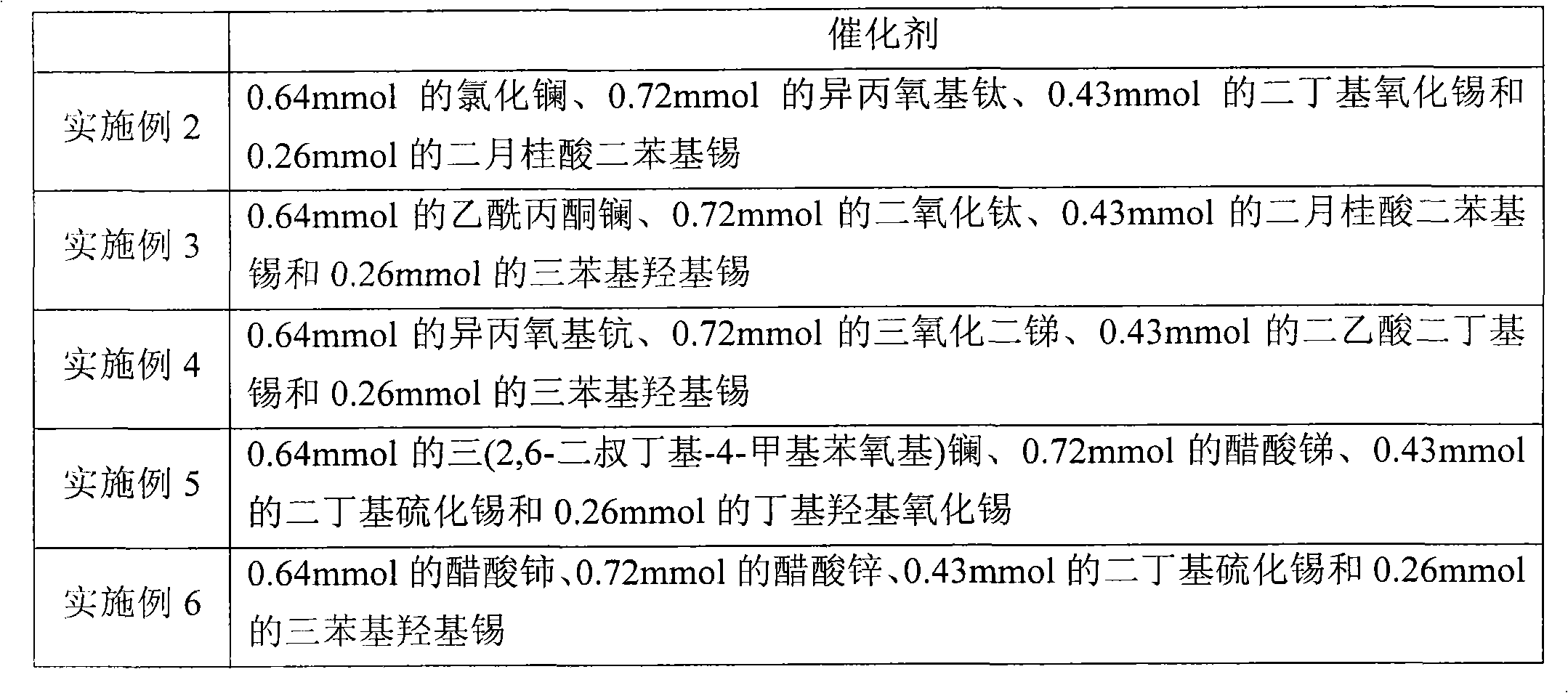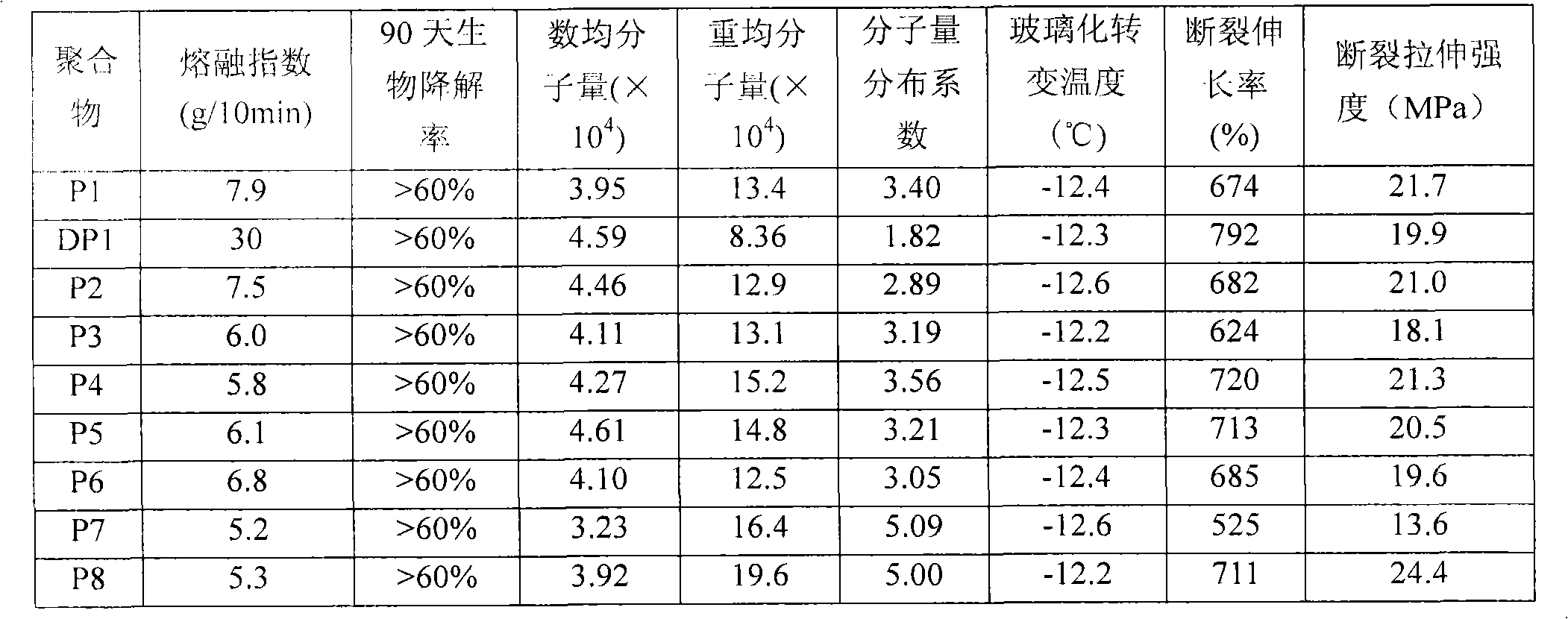Aliphatic-aromatic copolyester and preparation method thereof
An aromatic and copolyester technology, applied in the field of preparation of aliphatic-aromatic copolyester, can solve the problems of low melt viscosity and high melt index of aliphatic-aromatic copolyester
- Summary
- Abstract
- Description
- Claims
- Application Information
AI Technical Summary
Problems solved by technology
Method used
Image
Examples
preparation example Construction
[0016] According to a first aspect of the present invention, the present invention provides a kind of preparation method of aliphatic-aromatic copolyester, the method comprises the following steps:
[0017] (1) Under the first esterification reaction conditions, make component a and component b carry out contact reaction in the presence of the first catalyzer, the second catalyzer and the 3rd catalyzer, the add-on of component a and component b The molar ratio is 1: 0.8-3;
[0018] (2) Under the second esterification reaction conditions, in the continued presence of the first catalyst, the second catalyst and the third catalyst, the reaction mixture obtained in step (1), component c, Component d and optionally added component b undergo a contact reaction, and the molar ratio of the total amount of component a and component c added to the total amount of component b added is 1:0.8-6;
[0019] (3) Under polycondensation reaction conditions, the reaction mixture obtained in step...
Embodiment 1
[0064] This example is used to illustrate the aliphatic-aromatic copolyester and its preparation method provided by the present invention.
[0065] Catalyst: The catalyst consists of 0.64 mmol of lanthanum stearate, 0.72 mmol of tetrabutyl titanate, 0.43 mmol of dibutyltin oxide and 0.26 mmol of triphenylhydroxytin.
[0066]Add 1.72 mol of terephthalic acid, 2.77 mol of 1,4-butanediol and the above catalyst into a 2.5L reactor, stir and heat to reflux under a nitrogen atmosphere, adjust the temperature to 230°C and react at this temperature , when the water generated by the reaction is completely distilled off (the reaction is carried out for about 100 minutes), then add 1.86mol of 1,4-butanedioic acid, 2.22mol of 1,4-butanediol and 7.34mmol of pentaerythritol, and continue heating Stir to reflux, adjust the temperature to 200°C and react at this temperature. When the water generated by the reaction is completely distilled (the reaction is carried out for about 100 minutes), t...
Embodiment 2-6
[0068] This example is used to illustrate the aliphatic-aromatic copolyester and its preparation method provided by the present invention.
[0069] The aliphatic-aromatic copolyester was prepared according to the method of Example 1, except that the composition of the catalyst used in each example was shown in Table 1 below, so as to prepare white polymers P2-P6 respectively.
[0070] Table 1
[0071]
PUM
| Property | Measurement | Unit |
|---|---|---|
| melt flow index | aaaaa | aaaaa |
| Functional group degree | aaaaa | aaaaa |
Abstract
Description
Claims
Application Information
 Login to View More
Login to View More - R&D
- Intellectual Property
- Life Sciences
- Materials
- Tech Scout
- Unparalleled Data Quality
- Higher Quality Content
- 60% Fewer Hallucinations
Browse by: Latest US Patents, China's latest patents, Technical Efficacy Thesaurus, Application Domain, Technology Topic, Popular Technical Reports.
© 2025 PatSnap. All rights reserved.Legal|Privacy policy|Modern Slavery Act Transparency Statement|Sitemap|About US| Contact US: help@patsnap.com


